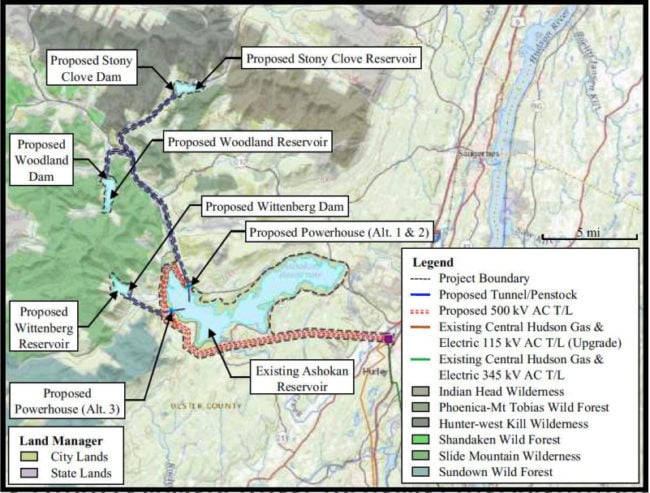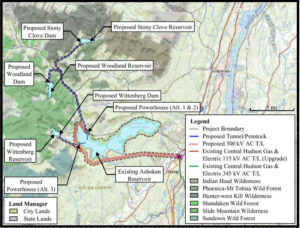Ashokan Reservoir: Wrong location for pumped storage

View more images on our Flickr site
Riverkeeper joins partner organizations and affected communities in opposing a pumped storage project being proposed for the Ashokan Reservoir.
UPDATE: Good news! On April 12, due to the response from the public, Premium Energy Holding withdrew its application for the Ashokan Pumped Storage project.
Riverkeeper will continue to monitor any new proposals in our region – and we are prepared to advocate for the rights of nature, our waters and any impacted communities.
What is ‘pumped storage’?
Pumped storage is one method of storing electricity for later use – and the need for energy storage will grow with the expansion of renewable energy. It works by storing water at a higher elevation, and then releasing the water when needed to power hydro turbines located below the upper reservoir. Pumped storage is not a replacement for power plants, such as Indian Point nuclear plant, since it only increases capacity to store energy, rather than adding more energy to the grid. While there is currently a large demand for energy storage solutions, pumped storage is a flawed solution that uses more power than it stores, is expensive, and damages the area’s ecology with the rapid changes in water level in the upper reservoir.
What is the Ashokan Pumped Storage Facility proposal?
 Premium Energy Holdings submitted a preliminary permit application to the Federal Energy Regulatory Commission for a proposed Ashokan Pumped Storage Facility. It plans to leverage the Ashokan Reservoir – one of the most important parts of New York City’s drinking water supply – as the lower basin, and construct a new upper reservoir at one of three sites – Stony Clove, Woodland Valley, and Wittenberg – to be acquired through eminent domain.
Premium Energy Holdings submitted a preliminary permit application to the Federal Energy Regulatory Commission for a proposed Ashokan Pumped Storage Facility. It plans to leverage the Ashokan Reservoir – one of the most important parts of New York City’s drinking water supply – as the lower basin, and construct a new upper reservoir at one of three sites – Stony Clove, Woodland Valley, and Wittenberg – to be acquired through eminent domain.
The new reservoir would be connected to the Ashokan Reservoir’s west basin via an underground tunnel.
What are the problems with this proposal?
The project is proposed within the Catskills Forest Preserve, with impacts on formally protected and ecologically valuable land. The U.S. Department of Energy itself has recognized that development on such lands should be avoided.
The movement of water in pumped storage can affect the sediment regime and stream ecology. This is of heightened concern, since excessive sediment is already a major issue affecting the Ashokan Reservoir and the quality of NYC’s unfiltered drinking water. The project would likely affect the 9.5 million residents of New York City and many Hudson Valley communities that rely on its drinking water. It also has significant implications on the health of the Esopus Creek and the communities on its banks, and to the communities that draw drinking water from the Hudson River.
How can I be involved?
The project is currently in its pre-filing stage, soliciting comments from the public. If it proceeds, the developer would take years to conduct studies and prepare its project application. Let’s stop this from going any further.
• Learn more about the project and its impacts on the Town of Olive’s website.
• Tell FERC that the Ashokan Reservoir, NYC watershed, and the Catskill Forest Preserve are not the right place for a pumped storage project by submitting comments by April 12 on FERC’s website, docket number P-15056:000. Please visit Save Catskill Preserve Action Page for a helpful step-by-step instruction guide.
• Those who want to preserve the right to challenge FERC’s decision in court can also submit a motion to intervene. Instructions can be found on FERC’s website.
• Download our Ashokan Pumped Storage Fact Sheet [PDF]
More information: Save Catskills Preserve
